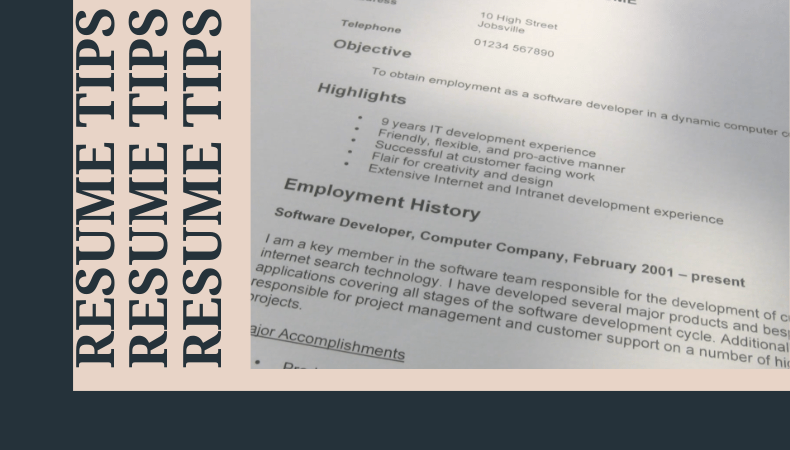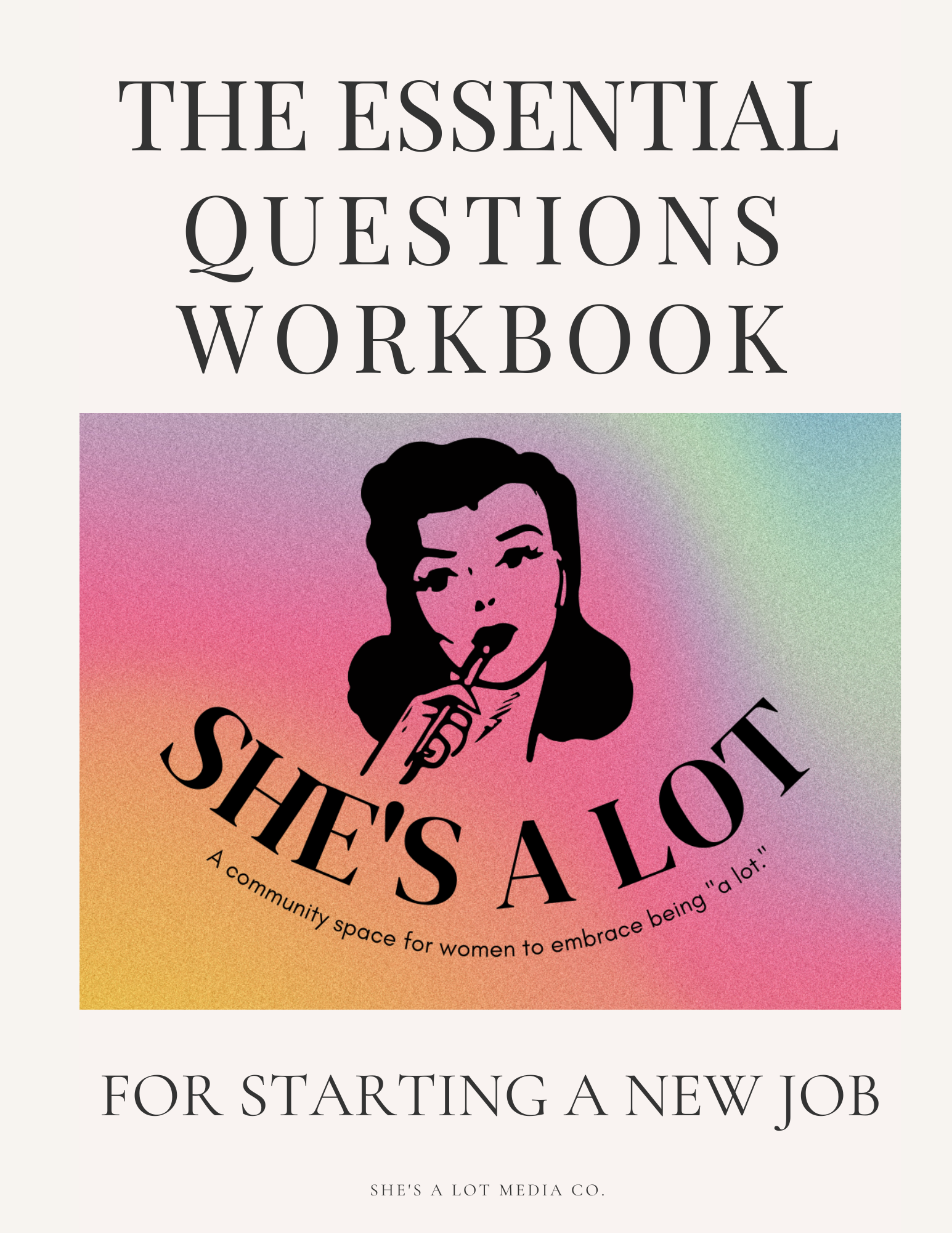
The average employer won’t spend more than a few seconds looking at your resume.
Make. Them. Count.
Whether you’re creating your first resume for an internship or looking to revamp yours to make a career pivot, there are a few best practices that you should be aware of. To help you wow employers, we’re answering some questions you might have and sharing our 10 top tips for creating a stellar resume:
- What Should a Resume Look Like in 2022?
- How Do I Write a Good Resume?
- What Are the Five Parts of a Resume?
- 10 Tips for the Perfect Resume
Let’s get right to it so you can start knocking it out of the park with your resume.
What Should a Resume Look Like in 2022?
Resume standards are always changing, especially as technology becomes more readily available to more people. While different fields will have different standards – you would never submit a creative resume to a medical program, for example, there are a few basics that most resumes should follow in 2022. Your resume should be:
- Created digitally
- One page
- Saved as a PDF
- Easy to read
In addition to having your resume saved as a digital PDF that’s readily accessible, you should also make sure your LinkedIn profile is up to date with all of the experiences and skills that are on your resume.
How Do I Write a Good Resume?
A good resume can mean different things depending on what field you’re applying in, but overall, it’s about showing yourself in the best light. A good resume will highlight all of your best experiences and skills. It will also make it easy for your reader to get the information they need.
You can do this successfully by being strategic and selective about what you include in your resume, what wording you use, and how you layout your resume. We’ll go over how to do this in our 10 tips for creating your resume below.
What Are the Five Parts of a Resume?
Not all resumes will or should look the same. However, there are a few essential sections that all resumes will have. Even if you slightly vary these, they will generally fall into these five categories:
- Personal information
- Education
- Experience
- Skills
- Certification/Awards/Projects
The fifth section will vary depending on the field you’re applying in, the experience you have, and what you want to focus on.


10 Tips for the Perfect Resume
1. Make a master resume and then edit from there
Ideally, for every job, or at least every type of job, you apply to, you want to use a slightly modified resume that is tailored to that job description. However, creating a resume from scratch can be both time-consuming and overwhelming.
To avoid this, try creating a master resume that has all of your experience, all your skills, and different versions of your additional sections like certifications or awards. This won’t be a resume you actually send to any hiring manager, but it allows you to easily pick and choose relevant experiences.
When it comes time to apply for a job, take a look at the job description and your master resume. Then, select the skills, experiences, and extras that best match the job description.
2. Put the most important stuff on the top half
Now that so many things are digital, most employers are looking at your resume in a PDF viewer rather than on a sheet of paper. Because of this, they may only be seeing the top half of your resume before deciding if they want to scroll farther. Make the top half so engaging that they will look at the rest, no matter how they are viewing it.
Whether their PDF viewer only shows them half of your resume at a time or they don’t read the whole thing, putting the most important elements in the top half increases the chance they’ll see what you want them to see.
3. Put the company as the heading and the position below it
This tip doesn’t hold true for every industry or for every person’s experience. However, this can be helpful if your titles are somewhat vague or less important than who you worked for or your duties in that position.
Highlight the fact that you were hired by a big-name company by putting them in bigger font above your title, rather than the other way around.
4. Put your descriptions into bullet points
Put all of your job descriptions into easy-to-read bullet points to minimize the effort the reader has to put in. It may seem counterintuitive, but the easier it is for them to keep reading, the more likely it is that they will.
If they can scan your resume and catch keywords that are included in bullet points, instead of parsing full sentences, it’s easier for them to get the gist of your experience.
5. Use action verbs to describe what you did
Especially when you’re applying for a role where direct experience or leadership is an important part of the role, using action verbs can help hiring managers view your duties as more proactive.
For example, instead of “responsible for managing a team” use “managed/directed/led/ oversaw/trained/worked with a team of 15.”
Unless you are currently in that role, all of your verbs should be in the past tense.
6. Describe your success in the position
This rule might cause you to deviate from the basic rule of using action verbs. However, if you have had particular success in a position that would be important for an employer to know, make that a bullet point on your resume. An employer does not need to know every mundane task that is part of your duties – they need the highlights.
This can be something like rolling out a new program, overhauling the documentation process, or receiving recognition for something.
7. Use numbers and statistics
When applicable, use numbers to quantify how you succeeded in a position. Similar to the last tip, this can be used to highlight your notable successes or to show your efficacy in that role.
Use the number of clients you helped or the number of followers you gained for a company’s social media account. You can even use something like the hours you spent doing something, or the amount of something you did (like writing articles, filing reports, etc.) to show how much work you can handle.
8. Align all elements and text
Just like you wouldn’t want to allow for any typos because it can look sloppy, you also don’t want your layout to be sloppy.
Hold a ruler up to any lines/margins on your resume. Something as small as uneven spacing or indents can look sloppy to an employer. Show them your ability to pay attention to detail through your resume.
9. Match your word use and experience choice to the job listing
When writing the descriptions and skills on your resume, the job listing is there to help you. Look at the duties and the qualifications listed on the job listing and use it to pick which experiences and skills you highlight and what specific words you use.
If words like “self-starter,” “good time management,” “fast worker,” or “innovative” are in the job description, pick the experiences that exemplify that the most. Then, tailor the description of that experience to highlight how you were innovative or managed your time well.
10. Leave white space
While you want to show that you have enough experience to do the job, you shouldn’t cram every inch of your resume with words.
You still want your resume to look clean. Use different sized fonts to minimize the space that things like dates or locations take up. Then, arrange all of your sections so that there is enough white space between them all to keep it looking clean.
Wrapping Up
Resumes are the first thing an employer uses to gauge your experience and skills. So, it’s important to make it stand out. Even when you’re applying in a more traditional field or without a lot of experience, following these best practices can still help your resume stand out from a large pool of applicants.






